This year’s Open House Prague Festival, an annual celebration of Prague architecture, takes place May 15–21, 2023. The 9th edition of the festival is going to open more than 100 buildings and spaces around Prague for free on the weekend. Starting May 15, there is also going to be an eventful accompanying program, which includes walking tours, lectures, and discussions. Several buildings also offers tours in English.
The full list of all open buildings is now available on our website. The accompanying events will be published in the Events Calendar. We are also working on this year’s edition of the festival guide, available for purchase in our online store sometime in May and from May 15 also at the information center, located at the New Stage of the National Theater.
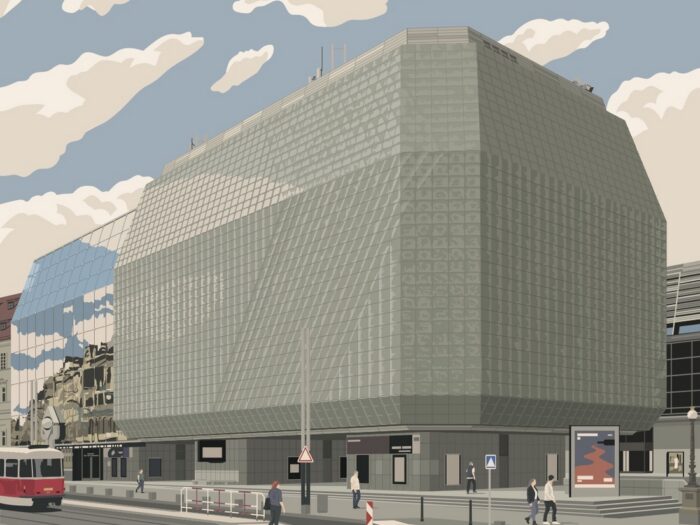
“During Open House Prague 2023, people can visit 109 buildings and spaces that are usually inaccessible. The list includes places that we regularly walk by without a chance to see what is hidden behind their walls and fences. Not only are there true gems of Prague architecture but, as people will learn on guided tours, there are often also fascinating stories behind the origin of the buildings, be it historical buildings, reconstructions, or modern projects. Thanks to them and the colorfulness of Prague architecture, we can stop for a little while to think and be mesmerized,”
says festival director Klára Veselá.
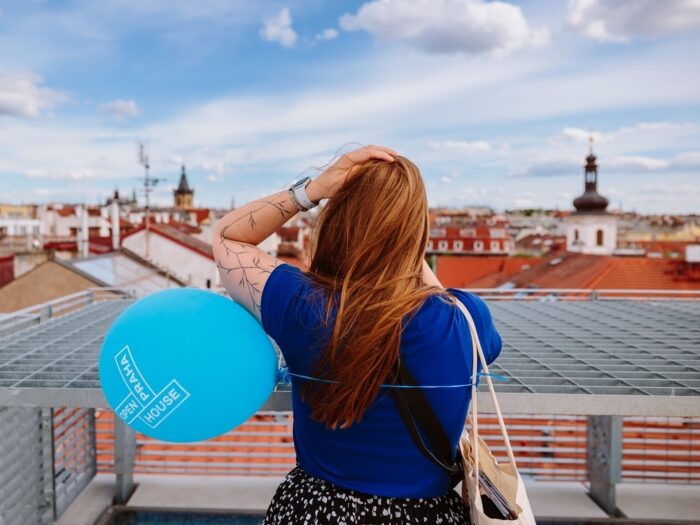
With the motto of the festival being Architecture for Everyone, the weekend tours of the buildings are for free. We strive to make the program as barrier-free as possible for various groups of citizens; therefore, the weekend program also includes special tours for children, people with visual or hearing disabilities, and long-term Prague residents from abroad. Aside from the owners, employees, and managers of the buildings, hundreds of volunteers also get involved in the festival. To be able to open all the announced buildings, we need over 500 volunteers this year, which is why the recruiting process runs until the last minute. Anyone can join our volunteer program, regardless of age, nationality, or profession. Help us open the city!
This year’s program celebrates the birth anniversaries of three important Czech architect. Firstly, we are commemorating Karel Prager, one of the eminent Czech architects of the 2nd half of the 20th century, born 100 years ago this summer. The program includes Prager’s projects from various stages of his life. For the first time during the festival, visitors can enter the former branch ofKomerční banka in Smíchov, explore the university campus in Jinonice from the 1990s, or see the backstage of the New Stage of the National Theater, opened 40 years ago.
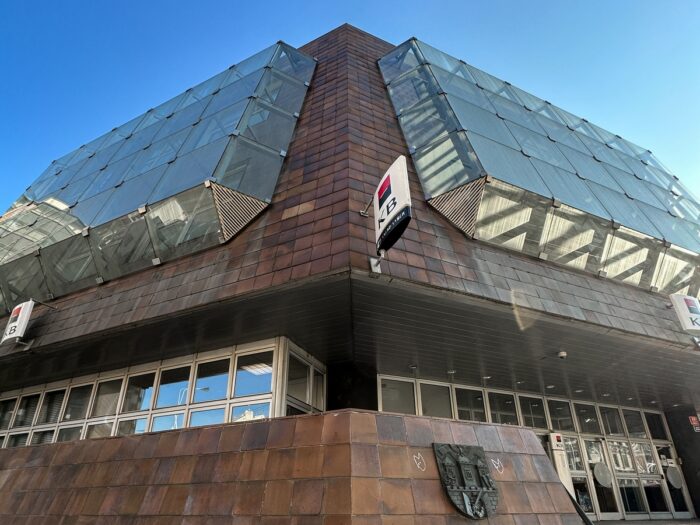
“The program also features the Boiler House of the General University Hospital or the so-called ‘Prager cubes’, now CAMP, which, as part of the accompanying program, will host a discussion on how to approach reconstruction of buildings from the 2nd half of the 20th century, including a tribute to Karel Prager,”
says creative director Andrea Šenkyříková.
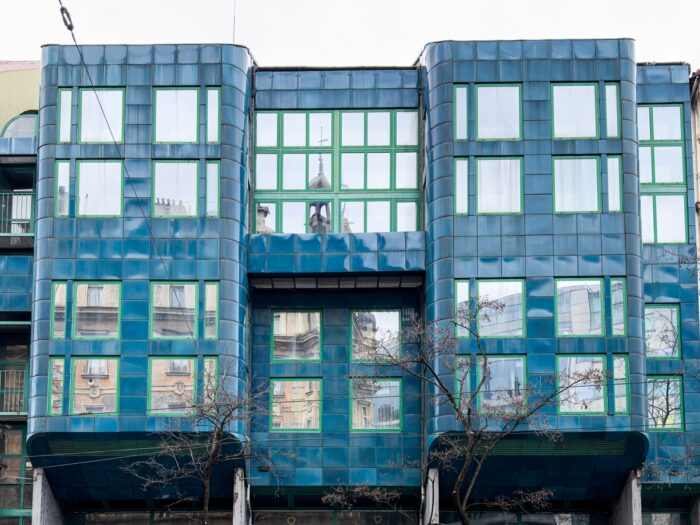
Another important architect of the 20th century is Věra Machoninová, who celebrates a milestone birthday this September. Her work in the style of brutalism is represented in the program by the administration building of Teplotechna Praha and DBK Shopping Center (formerly Dům bytové kultury, a shopping center with home furniture and textiles), which is considered one of the peak works of post-war architecture in the Czech lands.
This year’s program is also dedicated to Antonín Viktor Barvitius. On the occasion of the 200th anniversary of the architect’s birth, the festival is opening Gröbe Villa in Havlíček Park, Villa Lanna in Bubeneč, and the Church of St. Wenceslas in Smíchov. The impressive basilica in Smíchov is a prime example of Czech neo-renaissance architecture. The interior is dominated by Barvitius’ main altar made from several types of Carrara marble and an unusual wooden, gold-plated coffered ceiling. The accompanying program also focuses on the architect’s projects related to funerary architecture.


With 27 first-time participants, the program also features the former Hotel Intercontinental, which is currently under reconstruction, soon to be reopened under the name Fairmont Golden Hotel Prague. The renovation of the famous brutalist building is led by TaK Architects, authors of the award-winning reconstruction of Bubenská 1. Because of the on-going construction works, entry to the building during the festival is only possible after prior registration.
You can also visit Terminal 4 at Václav Havel Airport Prague, which has recently undergone an extensive reconstruction. Reserved for government delegations, the administration and check-in building is the oldest part of the airport. Designed by Adolf Benš in the style of functionalism, the building won gold immediately after it was finished at the International Exposition of Art and Technology in Paris in 1937. During the festival, you can visit the presidential and governmental lounge and see places that have welcomed important figures from abroad, such as President Barack Obama or Pope John Paul II.


Other government-related buildings featured in the program for the first time include the monumental Ministry of Transport of the Czech Republic, formerly the seat of the Central Committee of the Communist Party of Czechoslovakia located on Ludvík Svoboda Embankment. Visitors can enter not only conference rooms or the office of the transport minister but also the former apartments of the highest representatives of the Communist Party and the underground shelter. The festival will also open the Nostitz Palace, a late baroque seat of the Ministry of Culture of the Czech Republic. Here you can see the minister’s office, gallery, billiard room, and the chapel.
This year’s program features a number of successfully converted industrial buildings. One of the buildings at Braník Brewery was turned into a Dance Art Center, the former Bratři Vinopalové Factory – which produced devices for airplanes – now offers luxurious apartments under the name Vanguard Prague, and the former Breitfeld-Daněk Factory in Karlín is now a busy journalistic center of the media house Economia.


Next to Economia, festival visitors can also enter Machine House, which serves as the main office of the studio QARTA Architecture. In Smíchov, the local transformer station now serves as an exhibition hall of 400 ASA Gallery. Finally, KOH-I-NOOR Factory in Vršovice – formerly the production site of world-famous snap fasteners – is also going to be turned into a residential area in the future. The now vacant factory – whose largest building still features the company’s famous symbol of a girl with a snap fastener in her eye by Czech painter František Kupka – is sure to attract urbex fans.
The program also includes several recently finished constructions. In Vysočany, there is a new main office of the company Blum whose appearance reflects the industrial history of the location. On the other side of Prague, in Vokovice, the festival will open the award-winning Bořislavka Center, a place where modern architecture meets art. In Ruzyně, near the aforementioned Terminal 4, people can visit and learn more about an unusual “falling” building, serving as a showroom of electric bikes.

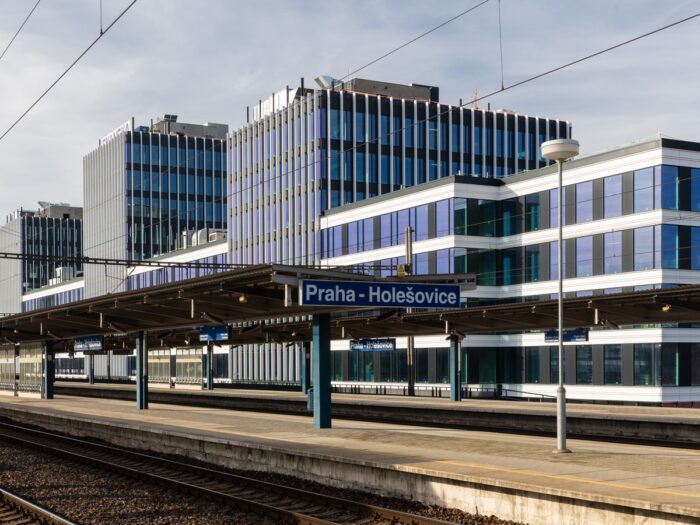
In Holešovice, you can see PORT7, a brand-new, nearly finished multifunctional complex of buildings aiming to become the beating heart of this quarter. In the district of Libeň nearby, you can see a former brownfield that has changed into a modern administration quarter. Here you can explore the recently finished DOCK IN FIVE, a building made with respect to the international standards of environmental sustainability.
The festival offers something for everyone. If you are not afraid of heights, you can climb up to the top of several water towers or roofs and terraces of high-rise buildings, such as the former administration building of Motokov in Pankrác (now City Empiria), where you can enjoy a view of the city from the 27th floor. The program also includes a number of schools and educational institutions, historical palaces, modern offices, hotels, and even a crematorium. This year’s curiosities include the Ceramic Lounge by Jan Kotěra at the General University Hospital and two historical boathouses in Podolí Harbor – the boathouse of the Czech Yacht Club, one of the oldest yacht clubs in Central Europe, celebrating 130 years since foundation, and the floating boathouse of TJ Tatran Praha.


Tours in English
While tours in most buildings take place only in Czech, there are a number of buildings that offer tours in English. These include Adria Palace, a unique example of Czechoslovak architecture from the 1920s; Institute of Organic Chemistry and Biochemistry, Czech Academy of Sciences, where you can visit both the historical and new, modern building of the institute and see the restored study of the brillian chemist Antonín Holý; Congress Center Prague, formerly Palace of Culture built to host congresses of the Communist Party of Czechoslovakia; or House of Fashion on Wenceslas Square, a former symbol of luxurious shopping where you can climb up to the roof and enjoy a beautiful view of the city.
In most cases, tours in English take place continually throughout the day, but there are some exceptions (The Fizz Prague and the Institute of Organic Chemistry and Biochemistry) where tours take place at a fixed hour only (more details can be found in the description of each building). The availability of English tours can be filtered in the program.
Need help deciding which places to visit during Open House Prague 2023? We have put together a list of carefully selected buildings that you shouldn’t miss, including several buildings that offer tours in English. Let’s take a nice trip around the Czech capital!

Comments are closed here.